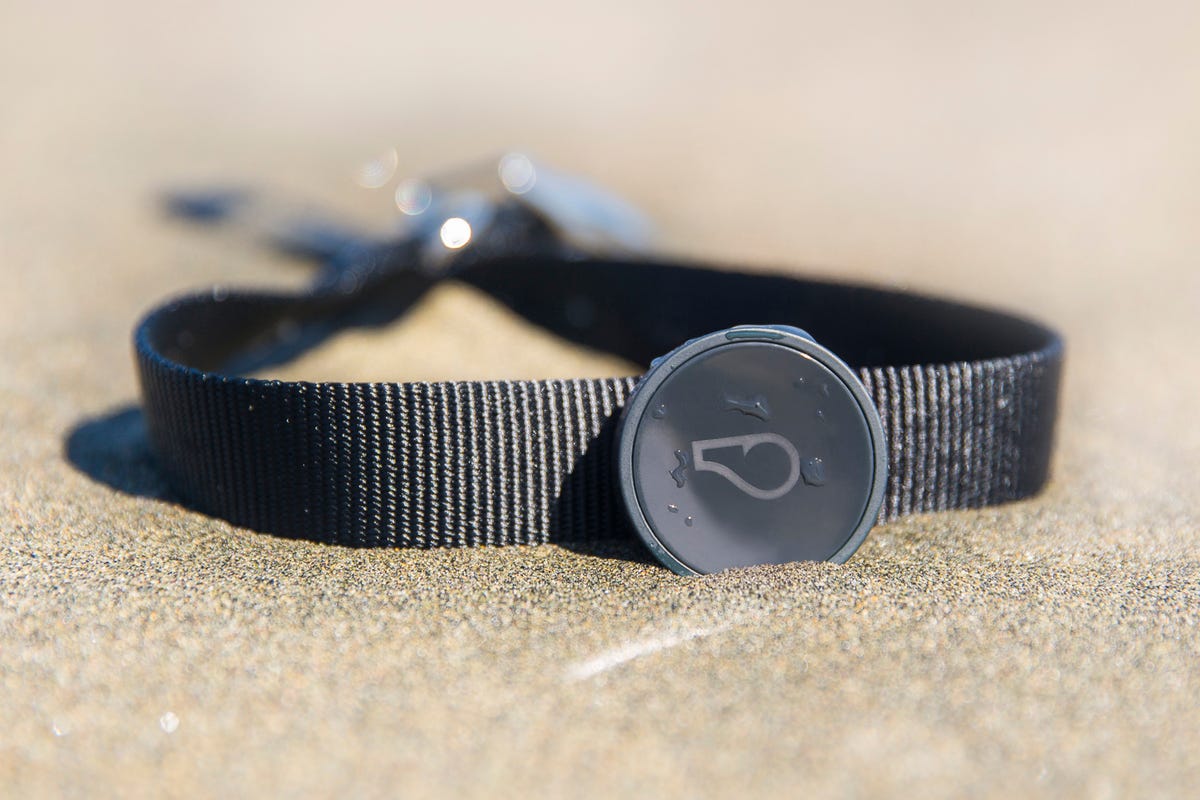
Whistle
Whistle, a leading maker of wearable activity monitors for our canine companions, is bringing GPS to its next generation device. This will allow pet owners to now track the location of their dog on top of the same tracking capabilities one can expect from human-worn wearables like FitBit and Jawbone wristbands.
WhistleGPS, like its predecessor that was shipped to preorder customers last fall, is a slim device meant to be worn around your pet’s neck and designed to be light and small enough to be accessible to a wide variety of breeds. It contains an accelerometer and is Wi-Fi and Bluetooth enabled with a battery life of eight to 12 days.
While the previous Whistle monitor sold for $130, WhistleGPS will — for one week only starting today — be taking preorders for $50.
The price will eventually jump to $130, but may not immediately kick up that high after the $50 sale. The company may increase the price incrementally, but Whistle has a slated ship date for its GPS-enabled device for summer 2015. To enable location monitoring, Whistle will charge $5 per month, but will be offering lifetime subscriptions to all existing Whistle owners.
Whistle began selling its first device nationwide at PetSmart stores in March, but plans to initially take preorders for WhistleGPS exclusively on its website during and after the course of its price cut campaign. In doing so, Whistle will donate one device for the first 3,000 units sold to the Morris Animal Foundation Golden Retriever Lifetime Study, a research program that studies the development and leading causes of canine cancer.
The program currently tracks by hand the daily activity of the participating dogs, but will now be aided by Whistle in gathering all types of activity data in an effort to better understand cancer in canines.


Whistle
“We knew since we started the company that GPS is really important,” said Steven Eidelman, a Whistle co-founder and the startup’s head of product. “What’s my dog doing, who’s he with, is he safe, what’s he doing.”
Eidelman noted that all those questions that percolate in an dog owner’s head daily when they’re away from their pet have created a unique and particularly engaging relationship with the Whistle iOS and Android mobile companion app.
“People open the app many times a day. It’s not because they’re concerned about their dog’s fitness. It’s because they really love their dog,” Eidelman explained.
That’s precisely where the whole “Fitbit for dogs” analogy is slightly mischaracterizing, as it carries an air of unnecessary opulence one associates with the skewering argument against pointless data collection. Clearly Fitbit and Jawbone fitness trackers are designed to give human beings data that they will then presumably use to try and change their habits and improve their health, or at the very least become aware of certain aspects of their daily activity.
With Whistle, the goal is to use wearables to form stronger relationships with animals that cannot communicate more intricate aspects of their well being. In essence, it’s clearly for you, the owner, and not the dog.
“We think of this idea as quantified other,” Eidelman noted. Similar to the baby monitoring market, the point is not so that you can start forcing your dog to count its calories or be reminded of how lazy an owner you are, though the latter is a definite side effect of owning the Whistle. Rather, the function is to both reassure and enable owners through technology to strengthen the relationship and rest their nerves.
“We’re not telling you steps or points. We’re trying to tell you the story of your dog’s day,” Eidelman said.


Whistle
That’s where GPS makes perfect sense. According to one of the first national studies on lost pets, the findings of which were released in 2012, 15 percent of pet owners reported a lost cat or dog in the last five years, amounting to roughly 10 million pets lost annually. While that’s reassuringly low — and the return rate of lost pets was a promising 93 percent for dogs and 75 percent for cats — only 15 percent of pet owners were aided by identification tags or microchips.
With a GPS-enabled collar, the ability to find those pets is made easier with a wider range of accessible tools. Beyond that, it’s also a way to round out Whistle’s daily story telling techniques. Interestingly, the networking infrastructure beyond WhistleGPS may prove to be widely influential outside wearables.
“The challenge was that GPS in its current form as it exists up until today relied on a 3G cellular chip. It brings up costs, and think about the battery life on your phone,” Eidelman said. “With things like Google Maps, it drains pretty fast.”
Whistle already tries to minimize battery drain by packing in Wi-Fi functionality, a necessity considering you the owner aren’t wearing Whistle and can’t rely on Bluetooth communication with a smartphone to access and archive the device data while your dog stays at home.
So Whistle waited until a new type of technology, one designed to aide the adoption of the increasing number of devices in web of the Internet of Things, began rolling out in the US.
“It’s called sub-GHz wireless networks,” Eidelman explained. “It’s basically using part of the spectrum similar to old cordless phones.” The company Whistle partnered with, Sigfox, recently raised $20.6 million in venture capital funding and is using its low-energy, low-cost networking technology to bring all sorts of devices online by pulling up its own towers and creating a universal communication standard.
Sigfox has already deployed its alternative cell networks in France and Spain, and in other select areas of Europe, most notably in Moscow where it’s worked to pull parking meters and bus stops into Russia’s municipal networks.
“All of these millions of devices coming online need a way to connect to the Internet. A lot of them can rely on your phone being in proximity,” Eidelman said. “But there’s a lot of things we’re going to want to connect to the Internet that are either relying on Wi-Fi or don’t have any way to connect unless they come into range of Bluetooth that could really benefit from the Sigfox network.”
In that respect, Whistle is a banking on its position as a potential pioneering partner in more than just pet-worn wearables. Whether or not Sigfox can anchor the WhistleGPS’ flagship functionality remains to be seen, but with Whistle hitting the market a year from now, it’s safe to assume its use of sub-GHz Wi-Fi will either be safely set in stone or shelved in favor of a different technique for tracking dogs’ location.



